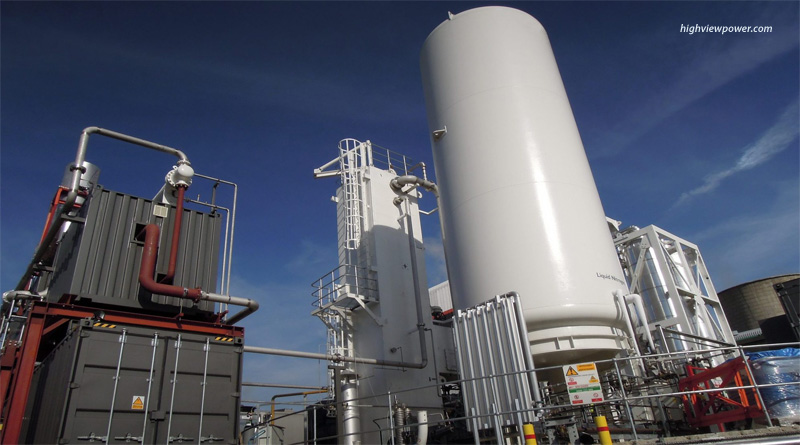Could Liquid Air solve the Electricity Storage challenge

A big, ongoing challenge with renewable energy, especially solar and Wind, which have seen an unprecedented level of investments and ever growing deployment, is the matter of stability. Being produced intermittently, the challenge has been to supply power dependably, which meant that for base load requirements, coal. Nuclear remain viable options on the table for now. In fact, the figures grabbing headlines for renewable power, in terms of their competitiveness to fossil fuels, miss out conveniently on this aspect. That these are numbers without any storage option to speak of, which makes a 100% renewable future really expensive, or at least some way off, till more viable storage options are invented.
But perhaps, not for as long as some people think.
A pioneering project in north-west England will turn air into liquid for energy storage to help electricity grids cope with a growing amount of wind and solar power.
Highview Power in the UK claims to have done this successfully, in a scheme next to a landfill site in Bury, Greater Manchester, that uses excess or off-peak electricity to chill air to -196C, transforming it to a liquid state to be stored inside large metal tanks. Later, pumping and/or heating can be used to turn it back to a gas, which when released to turn a turbine, can generate electricity at times of need, but without burning any gases or releasing anything into the atmosphere.
While still, only a 5 megawatts (MW) rated plant as compared to other 50MW lithium-ion battery facilities being built by other firms, Highview Power claims the technology can be scaled up to hundreds of megawatts. The company is already exploring sites for a much larger, 50MW storage facility and proposes that their plants can be located anywhere, one of its key selling points. The firm has opened a US office and is also eyeing export opportunities in mainland Europe and Australia.
Gareth Brett, the company’s chief executive, said “the technology could time shift energy across the day, with the firm buying electricity when cheap and releasing it when prices are higher.” Ie, store solar/wind power when there is too much of it, and use it, when generation slumps naturally.
“If you only want to store energy for an hour, lithium-ion is fine but the reality is what people are looking to do is store excess renewable power and release it at peak times, which is usually four hours or more,” he added in an official statement.
The 690-square metre Bury facility officially opened in January this year. The budget of the plant was £8m and funded by the government. However, the company believes that the technology is more ready for commercialisation and could even succeed without subsidy, and the firm had already raised £25m from private investment for other similar projects.
Large-scale energy storage is seen as increasingly vital to help the National Grid of Britain, or for that matter everywhere that renewables are increasing their share. As local energy networks cope with the fast-growing levels of renewables, whose output varies depending on the amount of wind and sunshine.
click here for the video
copyright:iamrenew.com




